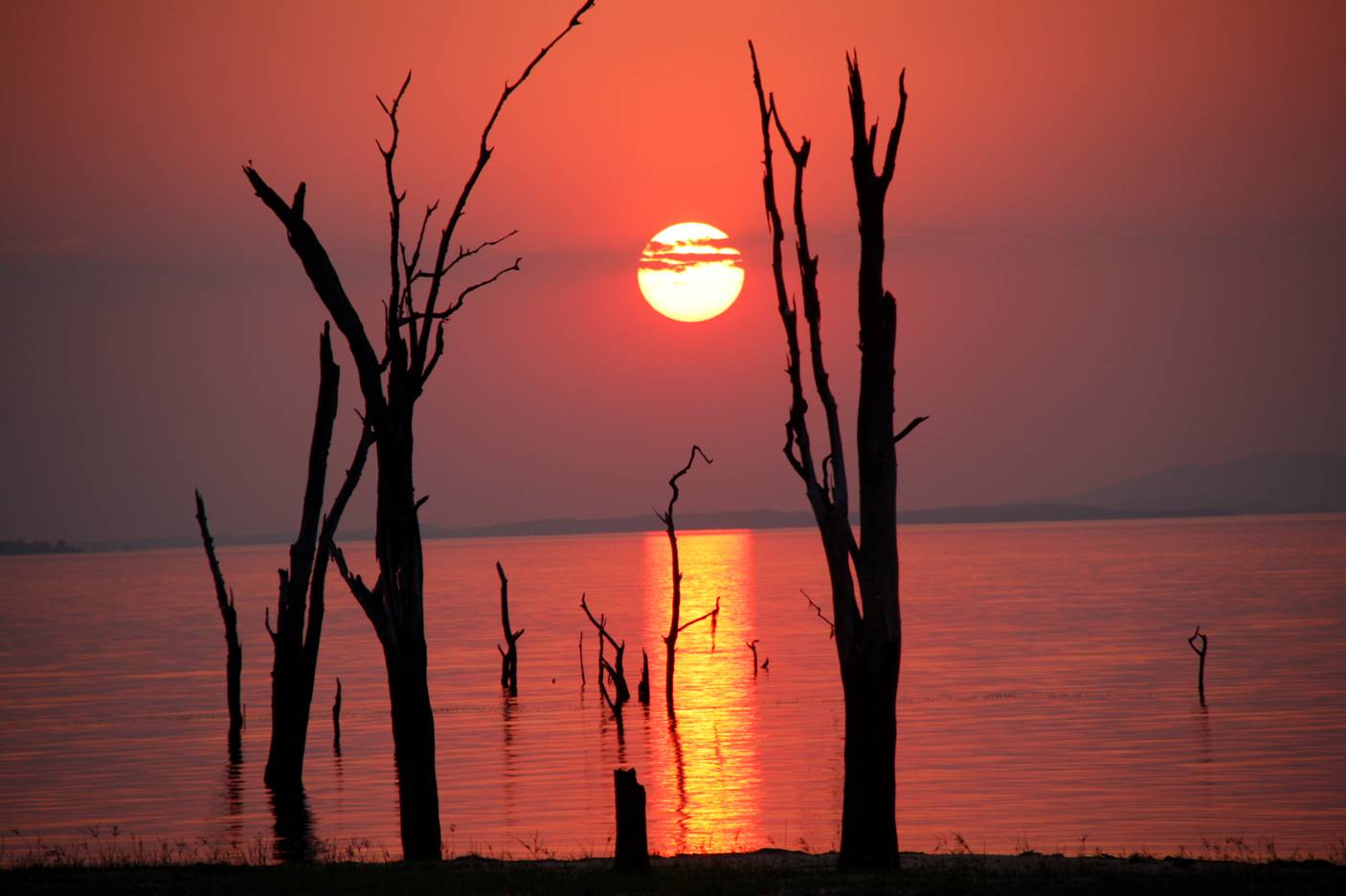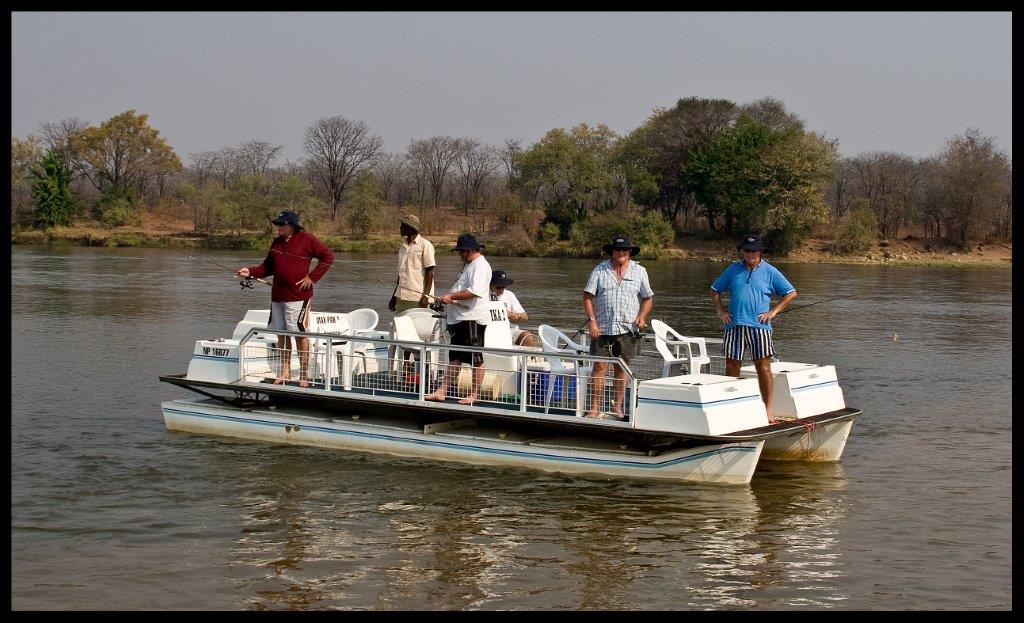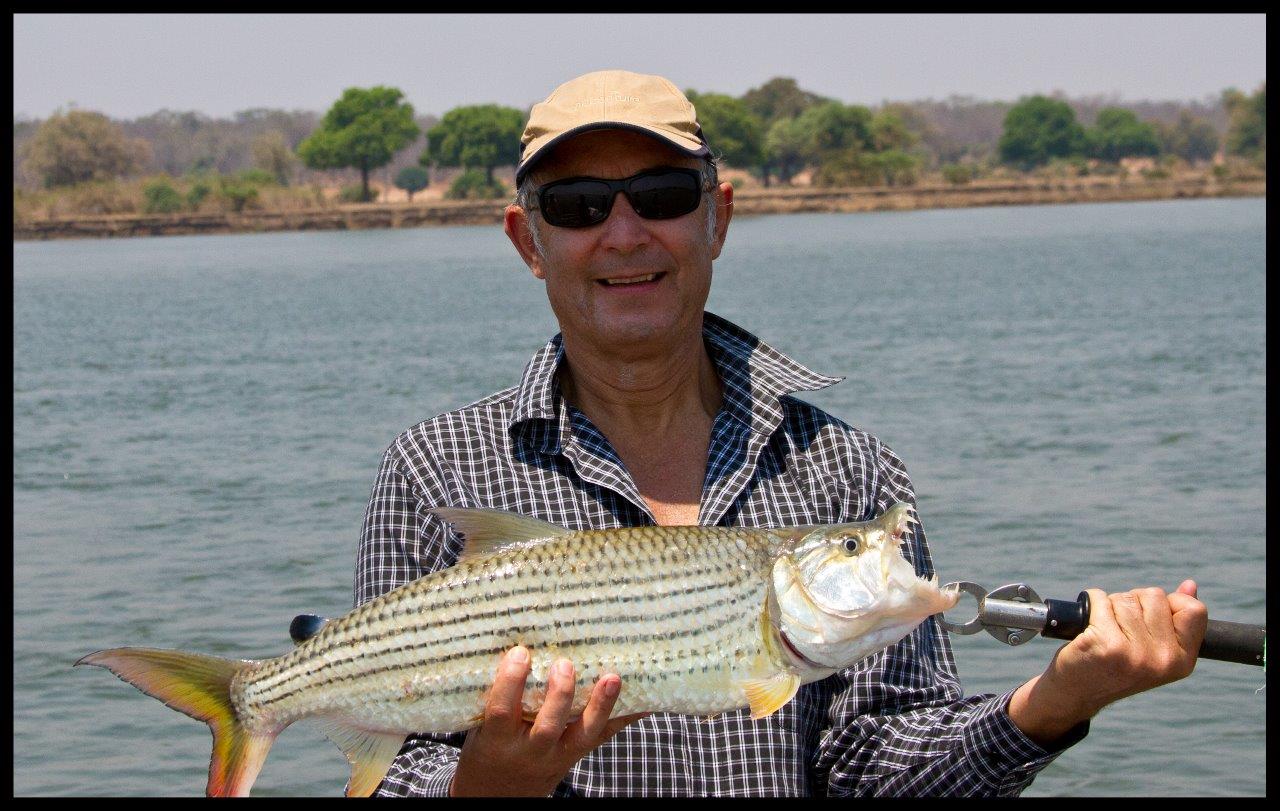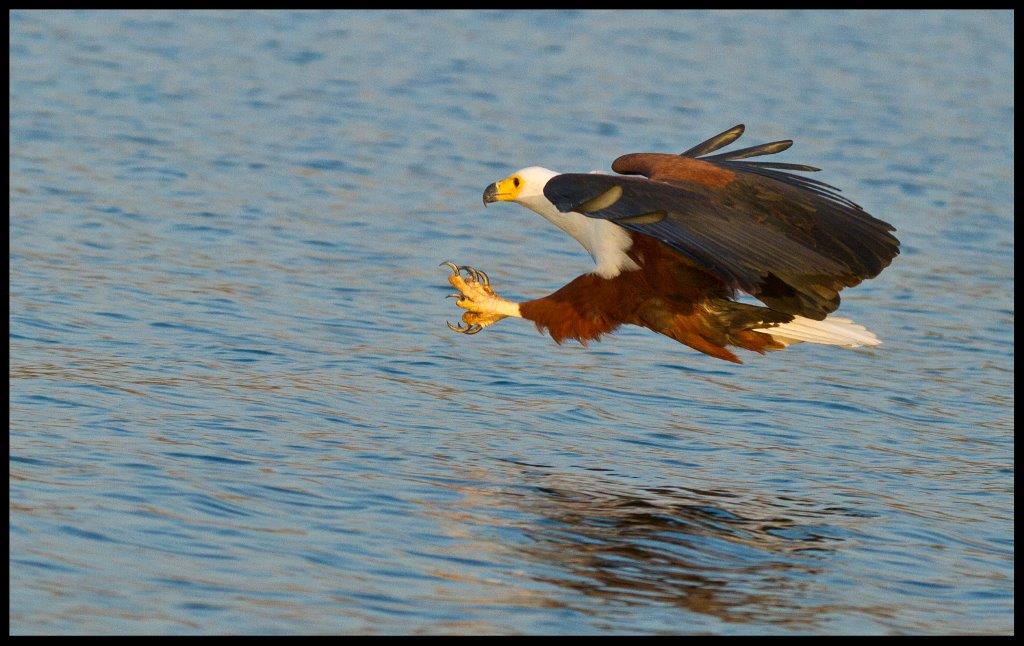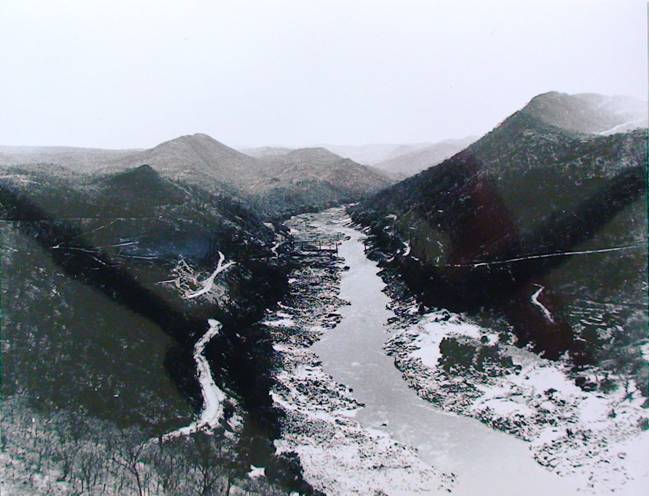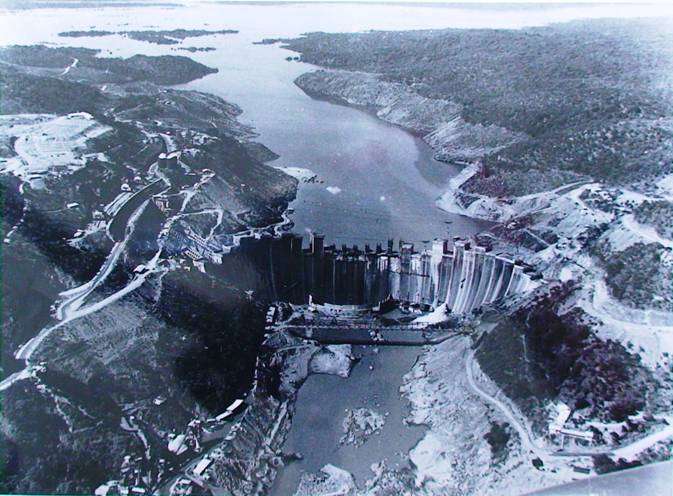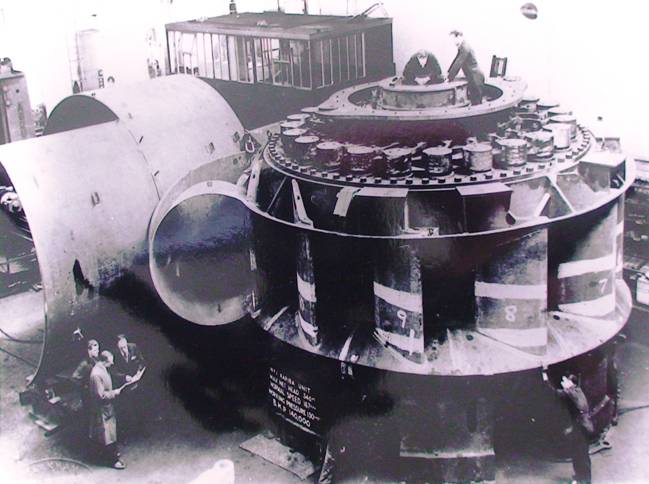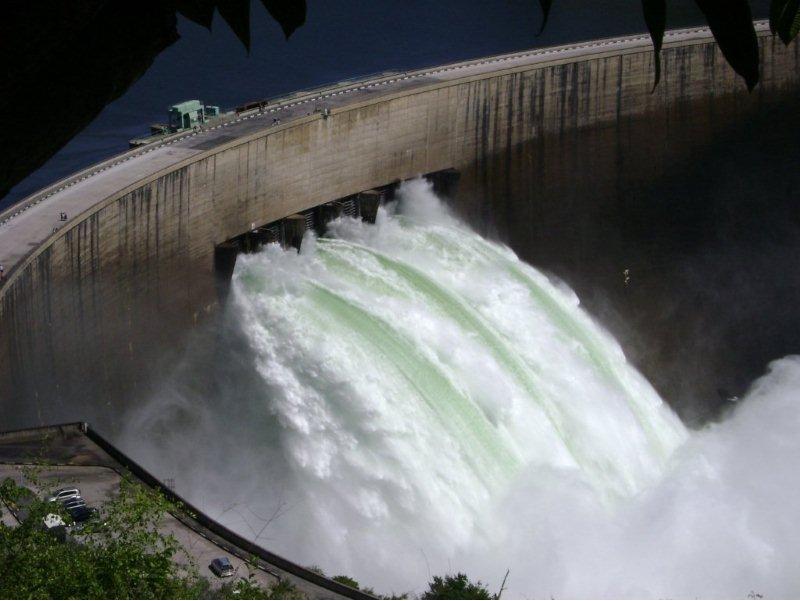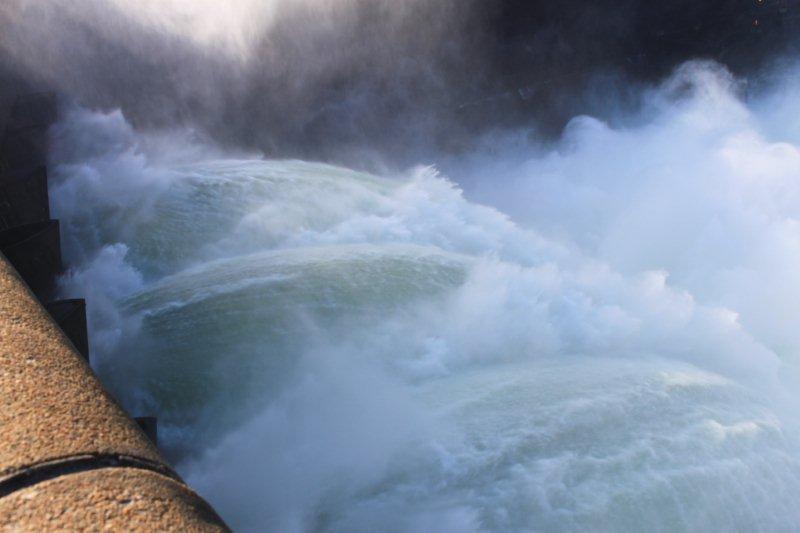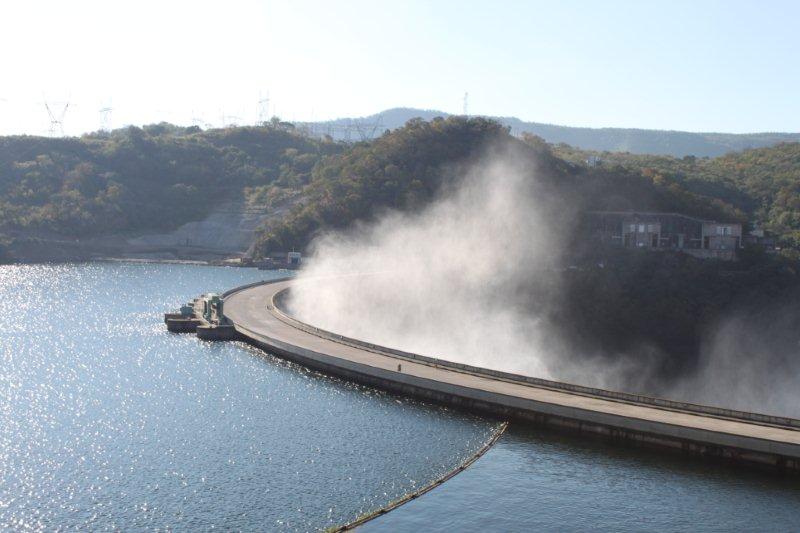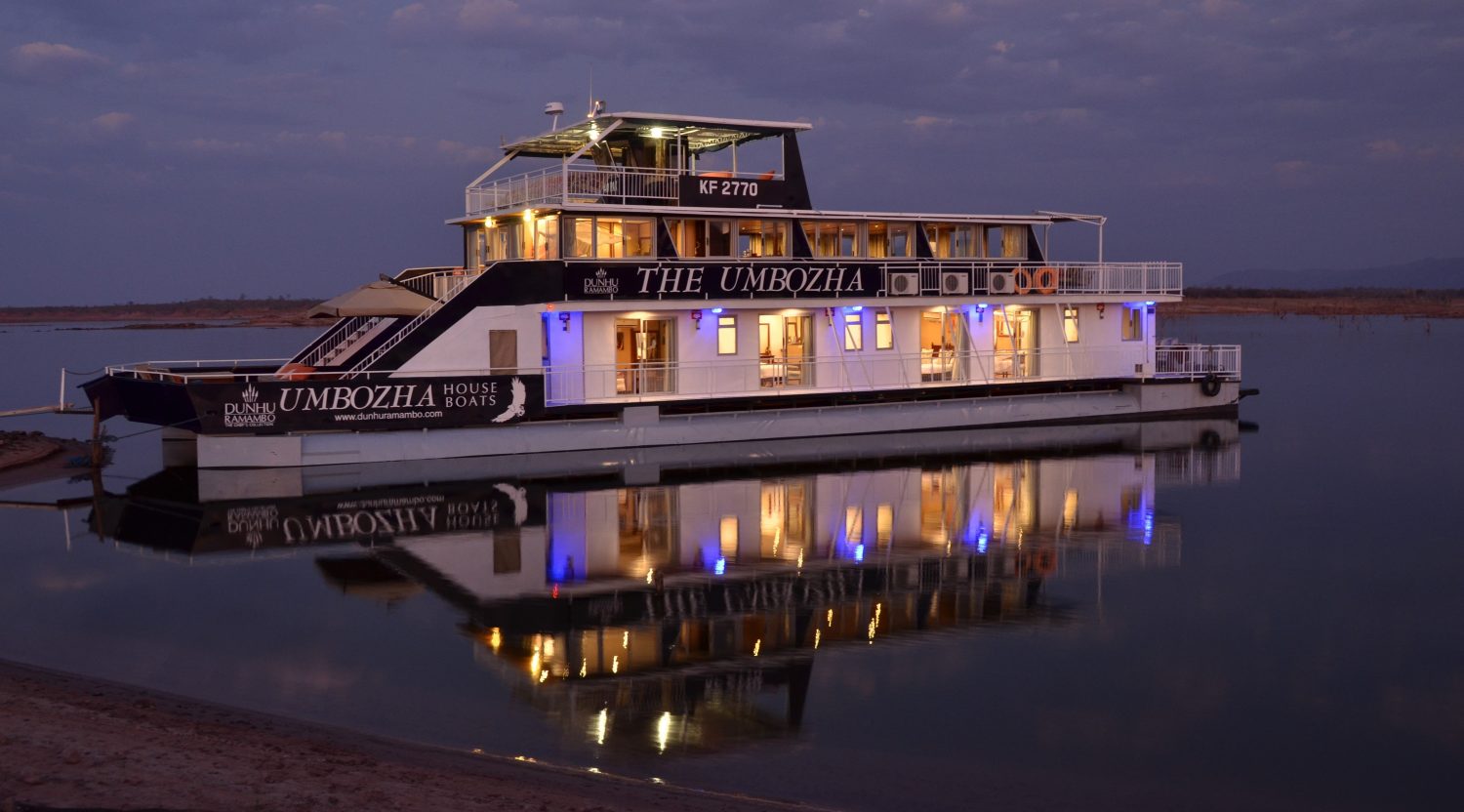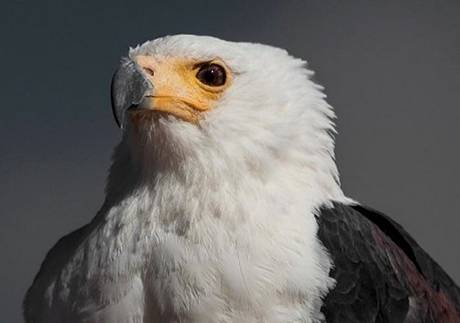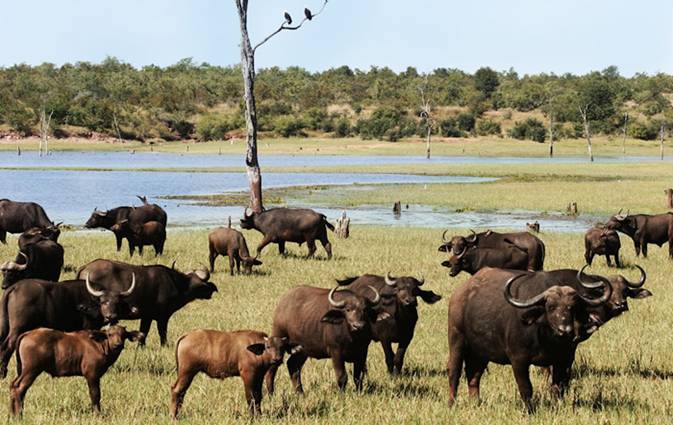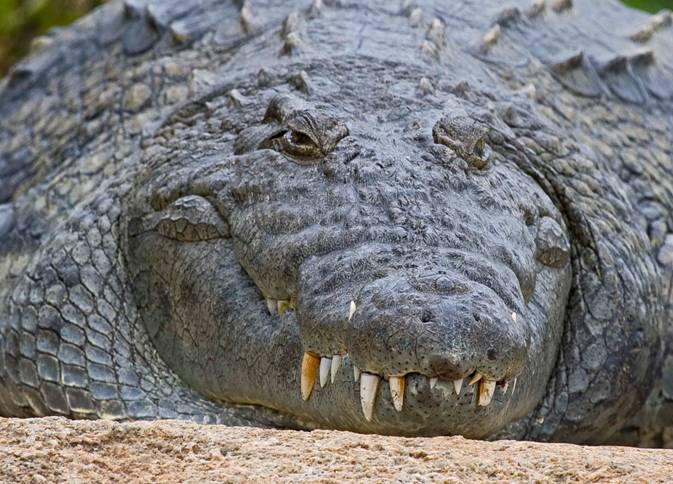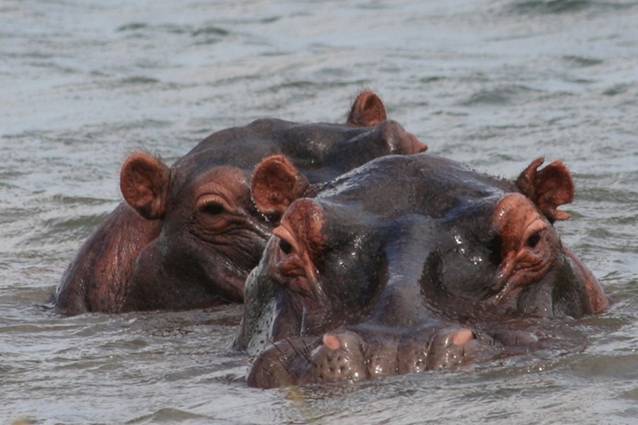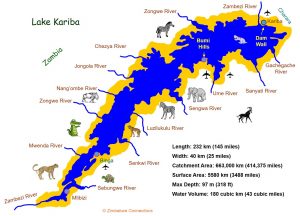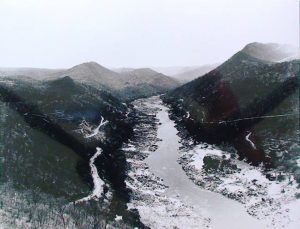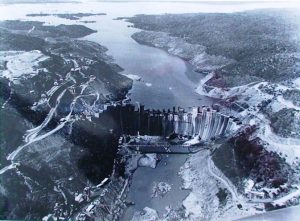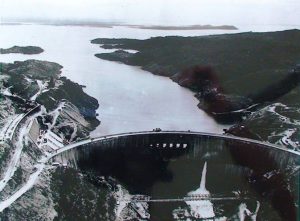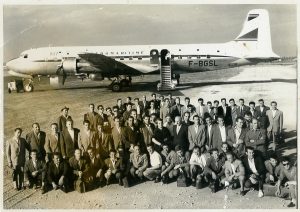Lake Kariba
Situated in Northern Zimbabwe and forms the boundary with Zambia
Lake Kariba was formed by the construction of the Kariba Dam which was started in 1955 and completed in late 1958. The dam was designed by the French engineer and designer Andre Coyne who designed over fifty five dams and was a specialist in ‘arch dams’, Kariba being one of them.
The dam was the initiative of the then Federation which comprised Northern Rhodesia (now Zambia), Southern Rhodesia (now Zimbabwe) and Nyasaland (Malawi). The Electricity Supply Commission (ESC) instigated an investigation for possible hydroelectric schemes to be located at Kariba and in 1941 funds were allocated. In August 1955 the Federal Government, representing the three countries, called for tenders for the construction of the dam wall and power station and it was awarded to the Italian firm Impresit on the 16th August 1956.
CLICK on image below
To dam the vast Zambezi floodplain was visionary and a major leap into the future. Vast areas of forest and bush land would ultimately be submerged to form the lake. The creation of the dam required the resettlement of approximately 57,000 Tonga people living along the Zambezi in both Northern Rhodesia and Southern Rhodesia and it also mean’t that thousands of animals would loose their habitat. The vegetation was strip cleared and burn’t leaving the lake rich in minerals and many of the trees that were left ultimately became the habitat for various species of wildlife that found their way into the lake. The flooding of the Zambezi Valley to form the lake created many islands, some only remaining for a short time as the lake rose. As a result many animals became trapped and required rescuing. The rescue project was named ‘Operation Noah’ and was lead by Rupert Fothergill with the head vet being Dr John Condy who pioneered many of the veterinary procedures used. No rescue programme on this scale had ever been undertaken anywhere in the world and certainly not involving such large numbers and variety of wildlife species.
The dam was constructed between 1955 and 1959 by Impresit of Italy at a cost of $135,000,000 for the first stage which was the Kariba South power cavern. Final construction and the addition of the Kariba North Power cavern was built by Mitchell Construction and was completed in 1977 for a total cost of $480,000,000. During construction, 86 men lost their lives. Over a million cubic metres of concrete was poured into the 128 metre high wall which has a thickness of over twenty four metres, this construction being necessary to withstand the pressure of nearly ten million litres of water which pass through the spillway every second.
At then end of 1958 the sluice gates were closed and in 1963 the maximum level was reached. At the time of its completion it was the largest man made dam in the world and is still today the largest lake by volume. The lake is two hundred and eighty two kilometres (176 miles) long and in places up to forty kilometres (25 miles) wide. The dam holds 185 cubic kilometres (150,000,000 acre·ft) of water.
The town of Kariba was built for construction workers on the lake’s dam, while some other settlements such as Binga Village and Mlibizi in Zimbabwe and Slavonga and Sinazongwe in Zambia have grown up to house people displaced by the rising waters.
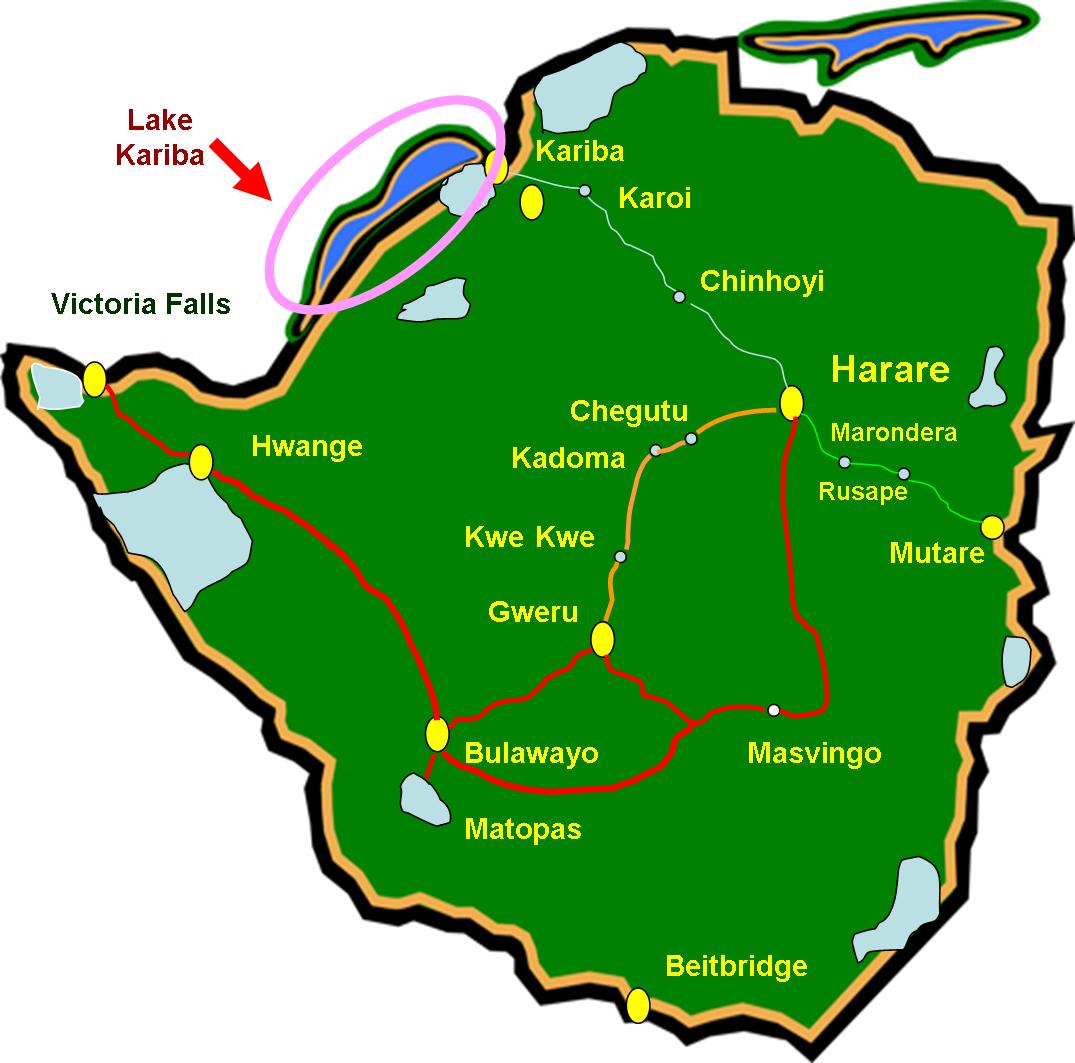
Kariba: The name Kariba (Kariva – meaning trap) refers to a rock which thrust out of the swirling water at the entrance to the gorge, close to what is now the dam wall site. The rock now lies some one hundred feet below the water surface.
The Zambezi River rises in north western Zambia and its catchment area covers 1,352,000 square kilometres and eight countries, namely Angola, Botswana, Malawi, Mozambique, Namibia, Tanzania, Zambia and Zimbabwe. It flows for approximately 2650 kilometres from its source and enters the Indian Ocean in Mozambique at Quelimane. The Zambezi is the fourth largest river in Africa.
Lake Kariba is the world’s largest man-made lake by volume in the world and it lies 1300 kilometres upstream from the Indian Ocean along the border between Zambia and Zimbabwe. The Kariba Dam is a hydroelectric dam in the Kariba Gorge of the Zambezi river basin between Zambia and Zimbabwe. The dam stands 128 metres (420 ft) tall and 579 metres (1,900 ft) long.


